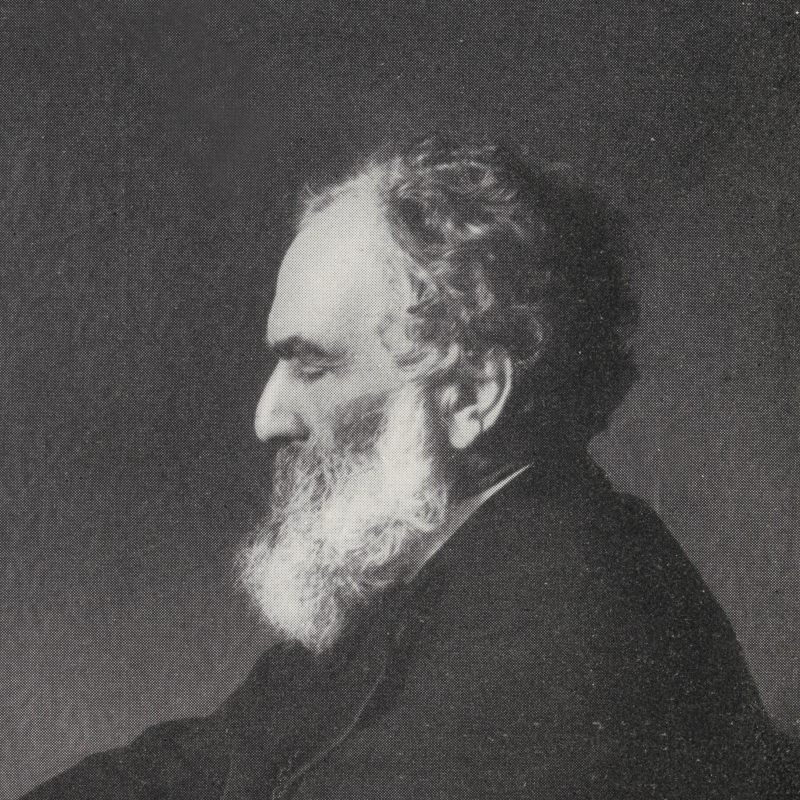How did a party of explorers come to spend four winters trapped in the Arctic ice - and how did they survive? Jon Bushell tells their gripping tale.
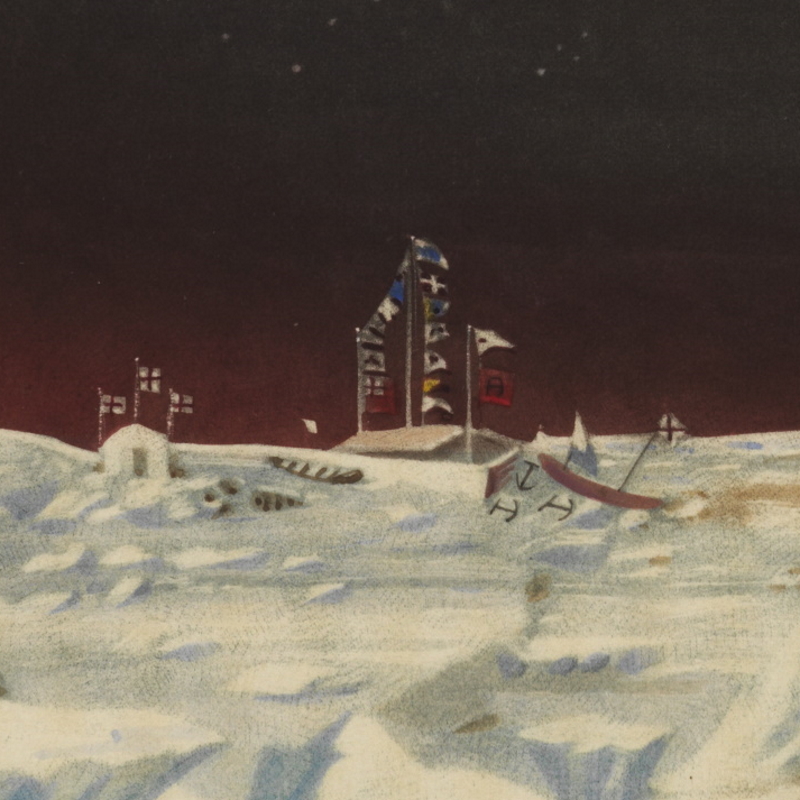
I recently answered an enquiry from a researcher about past homes of the Royal Society. From 1780 until 1857, the Society was based at Somerset House in London, along with the Royal Academy, the Navy Board, the Stamp Office and the Society of Antiquaries. While looking for a floorplan of the rooms there, I came across an illustration among our collections titled ‘Ground Plan of Somerset House’:
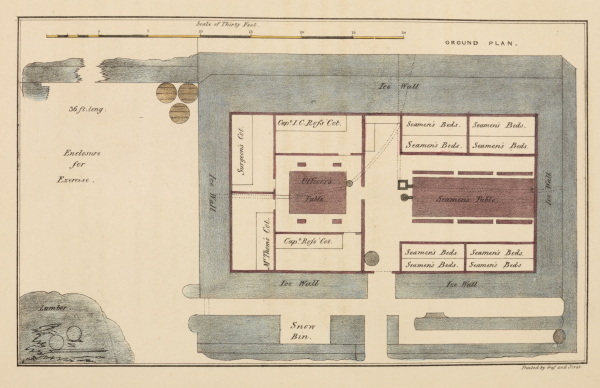
Ground plan of Somerset House from Narrative of a second voyage in search of a north-west passage, and of a residence in the Arctic regions during the years 1829 ... 1833, by Sir John Ross (London, 1835) RS.10428
This certainly doesn’t depict the grand building on the Strand – it’s rather small, for one thing. Furthermore, to the best of my knowledge no home of the Royal Society has had a designated exercise yard for the Fellowship. But the most obvious sign that this is a different building entirely is the ice wall that surrounds the entire structure, over a metre thick in some places. In fact, this was a world away from the streets of London: it was here that a crew of British sailors spent their fourth winter stranded in the Arctic in 1832-33.
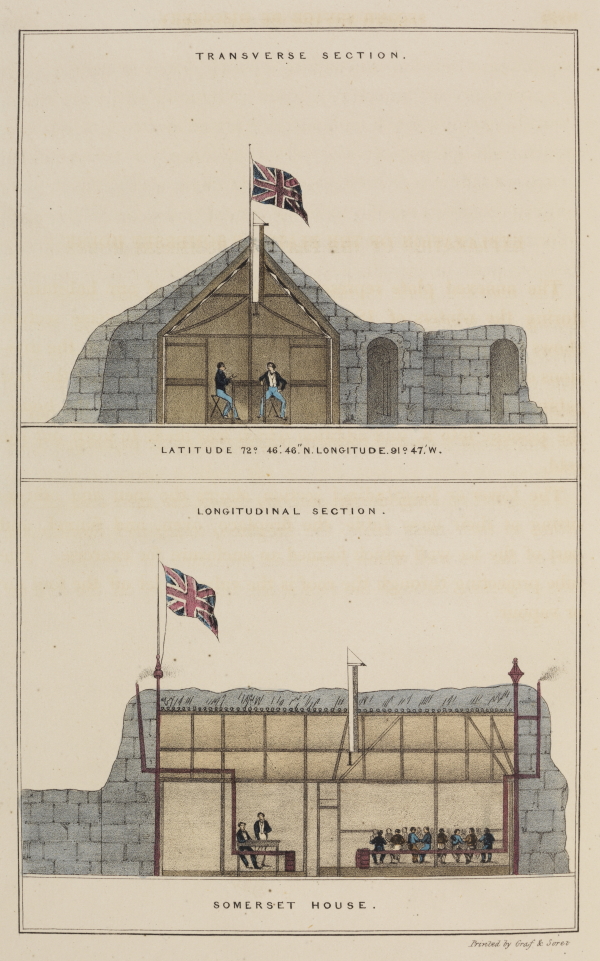
Transverse and longitudinal sections of Somerset House, from Narrative of a second voyage. RS.10427
At this point I should introduce the leader of the Arctic expedition, Captain John Ross. Regular readers of this blog may recognise the name: his earlier 1818 expedition set out to find the fabled Northwest Passage through to the Pacific, only to return to England because Ross believed the route to be blocked by mountains. Arguments over whether the mountains were real or a mirage seriously damaged Ross’s reputation when they got back home.
Ross’s second expedition to find the Northwest Passage departed in May 1829. They set off in the Victory, a steamship with paddles that could be operated by the ship’s engine in situations where the sails were of no use. Ross hoped this would help the ship break through the ice and improve his odds of navigating the passage in its entirety. Early progress was good, and by October they had reached Felix Harbour on the eastern edge of the Boothia Peninsula. Ross named both these landmarks after Felix Booth, owner of Booth’s Gin, who had financed the voyage.
Unfortunately, by this point it was clear that the engine was not living up to expectations. The paddles couldn’t drive the ship any faster than three miles per hour, and the boiler and pumps had numerous leaks which were difficult to patch up. In his account of the voyage, Ross laments that ‘the engine was not merely useless: it was a serious encumbrance; since it occupied, with its fuel, two-thirds of our tonnage’. The engine was removed from the ship entirely, and when the last pieces were dumped on the shore at Felix Harbour on 20 October, Ross commented that ‘I believe there was not one present who ever again wished to see even its minutest fragment’.
The expedition’s luck didn't improve from here. The Victory was trapped in the ice in Felix Harbour, forcing the crew to overwinter in the Arctic, relying on local Inuit tribes for food, warm furs and information. The ship was only free of the ice for a few weeks in 1830 and again in 1831, and in two years, the Victory managed to travel less than 10 miles in Arctic waters.
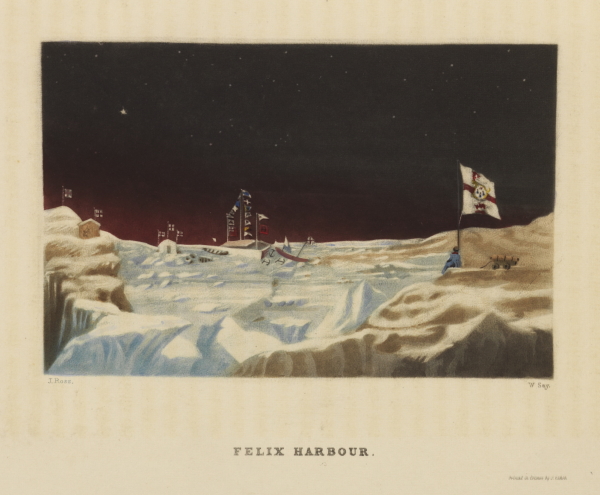
The Victory in the ice at Felix Harbour, from Narrative of a second voyage. RS.10421
In the spring of 1832 they made the decision to abandon the ship entirely, and travelled by land back towards Fury Beach, where stores from the failed 1825 Fury expedition led by William Edward Parry still remained. No rescue was forthcoming in the summer of 1832, and the sailors prepared to spend their fourth winter in the Arctic. At this point, they constructed the aforementioned Somerset House – named, incidentally, after ‘North Somerset’, the term applied to the local area by Parry, rather than the Royal Society’s London home. The crew finally made it to open waters using the Fury’s boats in August 1833 and were rescued by a whaling ship, the Isabella. By pure coincidence, this was the very ship Ross had commanded on the 1818 expedition.
Being stuck in the Arctic for four years did provide some opportunities, however, particularly when it came to scientific research by the crew. Their findings were published in a lengthy appendix accompanying Ross’s narrative of the voyage, and included an extensive collection of meteorological observations taken hourly on board the Victory from October 1829 right up to the end of March 1832, when the ship was abandoned. One of the most prominent scientific figures in the expedition party was James Clark Ross, John’s nephew, who had also accompanied him on the short-lived 1818 voyage.
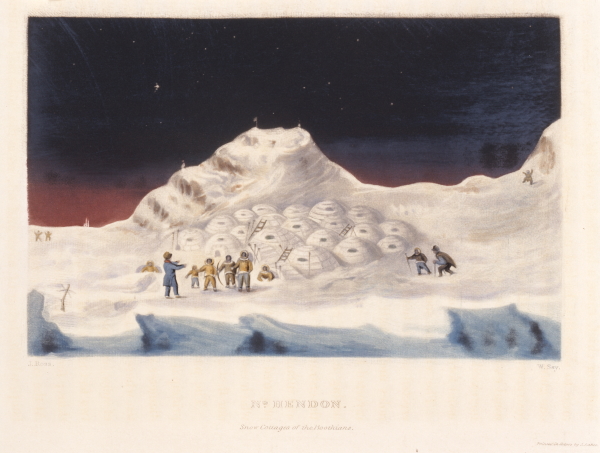
An Inuit village visited by John Ross and party in January 1830, from Narrative of a second voyage. RS.10423
During the summer of 1830, James undertook several expeditions by land to survey the coastline and identify possible routes the Victory might take once free of the ice. Again, the expedition party’s friendly relationship with the local Inuit population was vital, as they acted as guides on James’s expeditions. The following year, with their ship still stuck, James turned his attention to locating the north magnetic pole. On 1 June 1831, his small party finally reached a point ‘within one minute of the magnetic pole’. Their observations were subsequently published in the Philosophical Transactions in 1834 upon James’s return to England.
James had collected a trove of zoological specimens during the Victory’s voyage, including numerous birds, mammals, insects and fish. He lamented that the collection was ‘necessarily abandoned with the Victory’ in his introduction to the ‘Natural History’ section of the scientific appendix. Nevertheless, his extensive notes and sketches did make it back to England, and James was able to produce a detailed account of the various species encountered.
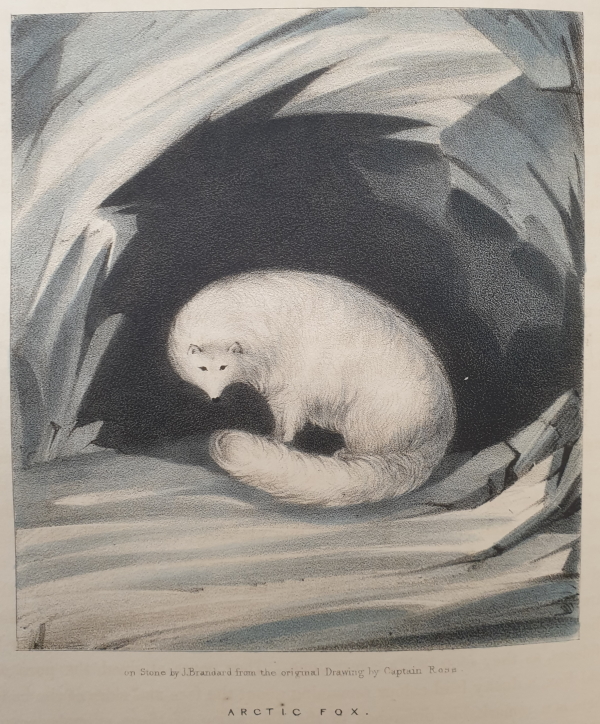
James Clark Ross’s sketch of an arctic fox, from Narrative of a second voyage
It should be noted, of course, that such voyages of exploration were not simply undertaken for scientific benefit. Claiming new territory in the name of the Crown and the British Empire was a common goal of many such expeditions. They could also open up new financial opportunities: for example, while describing the whale Balaena mysticetus (now known as the bowhead whale), James pointed out the close connection between exploration and the wider whaling industry, saying that ‘the produce that in any one year has been brought to England from those newly-discovered portions of the Arctic Seas, is more than sufficient to cover the whole expenses of all the Expeditions of Discovery that have been sent, during the last twenty years, to those regions’. A clear reminder that exploration, science and economic enterprise were very much intertwined at this time.
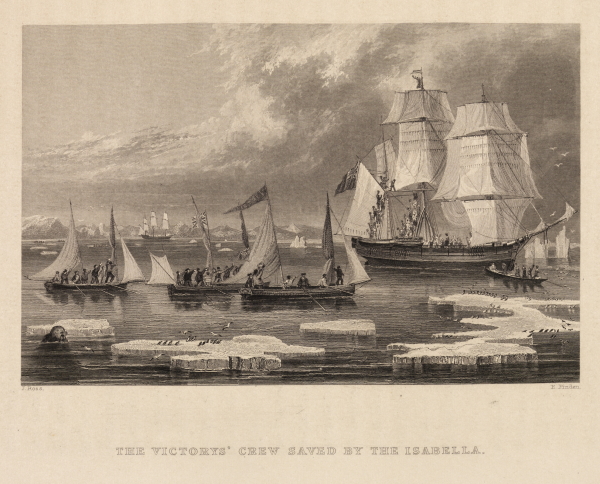
The rescue of Ross’s expedition party, from Narrative of a second voyage. RS.10429
The survival of the expedition members captured the public’s imagination upon their return to England in October 1833. John Ross and the entire crew had been presumed dead for two years prior to their rescue, but in the end only three crew members were lost during their four years in the Arctic. The new lands charted and claimed for England also impressed the King and the Admiralty, and restored John Ross’s reputation.
His nephew James Clark Ross spent the rest of the decade working with Edward Sabine on a magnetic survey of Great Britain. Following this he led his own highly successful expedition to the Antarctic from 1839 to 1843, before serving on the Council of the Royal Society. No doubt the Somerset House rooms of the Society, to which James had been elected as a Fellow in 1828, were considerably more pleasant than the lodgings where he spent his cold Arctic winter.




